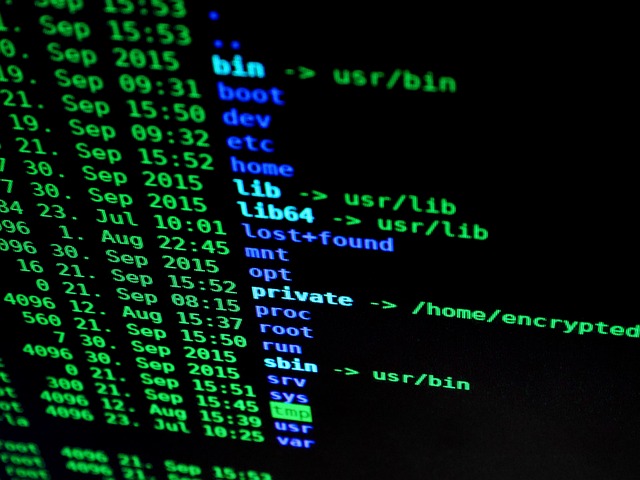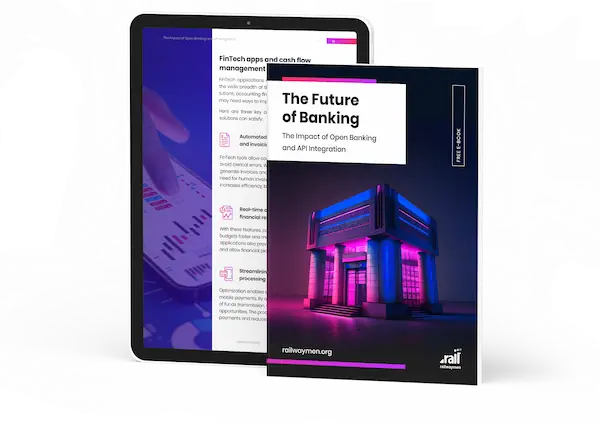Creating an entirely new FinTech App is a complex, stressful and time-consuming challenge. These types of applications are used to manage all kinds of financial tasks, from transferring funds between bank accounts to issuing invoices, which results in increased cyberattacks and threats. This is mainly due to the large amount of personal details, private and sensitive data that is collected. In this article, we will present the Best Practices for FinTech App Development, which will certainly be useful in terms of security when creating and implementing a new product on the market.

Table of Contents:
1. Introduction to the FinTech Industry.
2. Why is FinTech Security so important?
3. Security Issues in the Financial Services Industry.
4. Financial Technology Regulatory Obligations and Policies.
5. Best FinTech App Security Solutions.
Introduction to the FinTech Industry
FinTech is derived from the words finance and technology, and thus refers to any type of financial technology. FinTech categorizes itself as all products and companies that use innovatively developed Internet and digital technologies in the banking and financial services sector.
For more specific information regarding the financial technology sector, check out our Railwaymen's blog and the following articles:
-
What is FinTech? An Introduction to the Financial Technology Industry
-
The Benefits of FinTech Development for Businesses and Consumers

Why is FinTech Security so important?
Through the constant development of financial technologies, hackers are trying to find new ways to compromise data and carry out cyber fraud.
According to the Report "Risk rise in pandemic-hit FinTech sector", FinTech is considered one of the biggest targets of fraudsters.
It is estimated that about 98% of global FinTech companies and startups are vulnerable to this type of attack. There has been a significant increase in the number of cyberattacks against financial services companies using phishing, ransomware and data leakages.
Data breaches occur as a result of numerous thefts and hacks, with the primary cause being a lack of effective security measures. Banks and other financial institutions are required by law to accelerate in-house security, whereas FinTech firms are relatively exempt from these requirements.
As mentioned earlier, financial apps collect and store all kinds of personal and financial information, such as online transactions histories, credit card pins personal details, invoices, payment methods used, etc. By containing such data, they are an attractive target for hackers and criminals.

Security Issues in the Financial Services Industry.
#Data ownership
Businesses based on FinTech necessitate solid mechanisms and procedures for regulating data acquisition, modification, and deletion. Being responsible for data requires knowledge of numerous technical and legal processes, as well as state regulations and standards.
#Digital identities
The main task and purpose of the identification, authentication and authorization system should be the priority protection of the application against any hacking attacks or suspicious activities. Nonetheless, password-based authentication, as well as two-factor authentication (2FA), can be vulnerable to cyberattacks.
#Cloud Migration
Many companies operating in the FinTech sector decided to transfer their activities to cloud services in order to achieve better scalability, performance and cost optimization. However, the complexity and transactional load across different cloud environments can make it difficult to manage and assure data protection.
#Errors Made by Humans
Human error is the most common cause of successful phishing attacks. Cybercriminals can also profit from lost or stolen devices.
#Malware Attack
Malware attacks are the most common type of security, cyber threats to FinTech applications. It is a software that is installed on a computer without the user's permission and performs malicious actions such as password or money theft.
#Contribution of Third-Party Services
Integrations with well-known payment gateways, analytics systems, social networks, and chatbots can compromise application security.
In this way, hackers can impersonate an authorized user and gain access to the system.
#Compliance with Regional and International Data Protection Laws
A financial technology company must comply with different financial services sector regulations depending on its location or target markets. Non-compliance can result in losses of millions, loss of productivity, fines, business disruptions and penalties.
Financial Technology Regulatory Obligations and Policies
The cybersecurity requirements for FinTech applications differ depending on the company's location and the chosen target markets. The most common regulations that financial companies must follow concern data protection in the financial services industry.

Below is a list of the most popular regulations and policies:
-
GDPR (General Data Protection Regulation) - a set of privacy protection rules in FinTech applications that process information about European Union residents. The GDPR must be followed even if the company is located outside the European Union but intends to work with EU residents and businesses.
-
PSD2 (Payment Service Directive 2) - regulates the activities of electronic payment services in the EU to help banking services ensure their compliance. The directive is intended to create conditions for the development of innovative payment systems using the Internet or mobile devices.
-
PCI DSS (The Payment Card Industry Data Security Standard) - applies to organizations that collect, process, and use credit card information. MasterCard and Visa, for example, require service providers to validate their services in accordance with this standard. The PCI DSS has four levels. The greater the number of financial transactions you process each year, the more requirements you must meet.
-
eIDAS (Electronic Identification and Trust Services) - An EU regulation that applies to cross-border electronic transactions. Its main goal is to provide a common legal framework for transactions between FinTech companies, enterprises, government entities and end users.
-
FCA (Financial Conduct Authority) - supervises financial services in the UK. The regulation is about safe consumer protection and market integrity. The FCA registration procedure is mandatory for local FinTech service providers.
-
GPG13 (Good Practice Guide) - mainly applies to outsourcing companies as well as service providers who are closely involved in the UK government system. GPG13 is part of an official security policy framework that focuses on cybersecurity and intrusion detection systems.
-
SO/IEC 27001 - FinTech information security standards. The kit contains principles and frameworks that can assist organizations all over the world in establishing and maintaining secure data management systems. Cryptography, access control, a clean screen, and information security are among its guiding principles.

Best FinTech App Security Solutions
There are many ways to secure FinTech apps, but how cybersecurity is implemented in an application depends on many factors. It is necessary to analyze, among others, the aspect of the target group of application recipients, type of personal and financial data, levels of access permissions, etc.
Below, we have prepared a list of the most popular FinTech security solutions.
#Data Encryption
The encryption refers to encoding information into a code that requires special keys to decipher it into a readable format. There are various levels of complexity in encryption algorithms, with the most common being:
-
RSA: A highly secure asymmetric algorithm that is available in both public and private encryption keys.
-
Twofish: A symmetric encryption algorithm that is free and one of the more secure encryption protocols.
-
3DES: A widely used form of credit card PIN encryption.
#Tokenization
Tokenization is the process of converting confidential data into a generated number, which is called a token. With its help, it is possible to decrypt and convert the original information to a readable format using unique token vault databases.
#Professional Security Testing Team
The security of financial technology applications requires extensive testing throughout the development cycle. Regardless of time constraints, FinTech security testers should pay particular attention to the precision of tests and assessments in accordance with security protocols at every stage.
Remember to conduct regular IT security audit and carefully check all potential vulnerabilities in terms of identity verification, authorization, application performance and data security.
#Firewalls
The firewall is designed to monitor all incoming information and prevent malicious data from entering the system. The firewall assesses whether this information can be safely transferred.
#Role-Based Access Control
Different types of users have different needs to interact with the app. In FinTech Apps, not every user should have the same level of access rights in all areas. It is important that the application be in the form of role-based access control, and that granted access is governed by some rules.
#DevSecOps
The way to achieve a high level of security is to have a DevSecOps pipeline as part of the Software Lifecycle (SDLC). This means that decisions related to cybersecurity should be made earlier and relatively often because it is important at every stage of development.
As a result, cyber vulnerabilities can be detected and addressed early, and the foundations of a strong cybersecurity system can be laid before the entire application comes together.
#Adaptive Authentication
Adaptive authentication is an advanced form of multifactor authentication (MFA) that analyzes user behavior to detect suspicious activity.
The system evaluates all user activity in real time, at the time of suspicious movement, the system may ask for a biometric scan, entering a code or providing a one-time password sent via SMS.
#One-time password (OTP)
The one-time password (OTP) system is one of the most precise authentication technologies to streamline and increase security in terms of the authentication process. Each time the user tries to access the application, it will generate a unique password that must be entered within a certain time.
#Reduced login session time
Short login sessions help limit the amount of time a user can spend in the app before being logged out. Thanks to such actions, hackers have too little time to access the information they would like to gain.

Final Thoughts
FinTech is undoubtedly the future of finance and banking, but the industry still faces numerous challenges. One of the main issues with FinTech apps will continue to be sensitive data and privacy.
Customers' data security and protection should be prioritized in FinTech development, as failure can be disastrous. Realistic data breach scenarios and leaks can also affect a company's data.
Explore Fintech projects developed by Railwaymen
If you're interested in the FinTech solutions developed by Railwaymen, or want to learn more about the detailed history of each project from the initial discussions with the client to the final implementation - be sure to check out our website and click on the Case Studies tab.
CHECK OUT OUR FINTECH CASE STUDIES
What lies ahead for banking in the coming years?
Looking to stay up-to-date on the latest banking trends and innovations? Our e-book "The Future of Banking: The Impact of Open Banking and API Integration" is the perfect guide for you. With valuable insights and practical advice, you will be able to navigate the changes happening in the banking industry and stay ahead of the curve.
DOWNLOAD NOW






